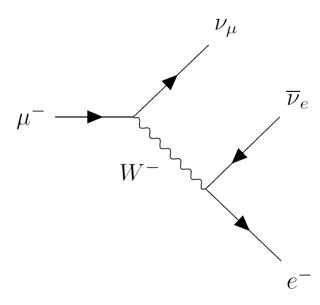Can the $\beta^-$ decay proceed by the absorption of a $W^{+}$ boson or the $\beta^+$ by the absorption of a $W^-$ boson?
The $\beta^-$ decay is known as the decay of a $d$ quark into an $u$ quark and a 'virtual' $W^{-}$ boson, which then decays further into an electron and an electron anti neutrino. Similarly, in the $\beta^+$, the $W^+$ boson emitted by the $u$ quark produces a positron $e^+$ and an electron neutrino $\nu_e$.
However the muon decay:
$\mu^-\to e^{-}+\nu_{\mu}+\overline \nu_e$ can occur either (1) by the decay of the muon to a muon neutrino and a $W^{-}$ boson, which decays then into an electron and an electron antineutrino:
 or
(2) by the production of a pair of $e^{-}$, $\overline \nu_e$ and a $W^{+}$ boson which changes the $\mu^-$ into the $\nu_{\mu}$:
or
(2) by the production of a pair of $e^{-}$, $\overline \nu_e$ and a $W^{+}$ boson which changes the $\mu^-$ into the $\nu_{\mu}$:

Can the same assumption, that there are two different possible paths (either with a $W^-$ or a $W^+$ boson as an intermediate), be made for the $\beta^-$ and $\beta^+$ decay?
